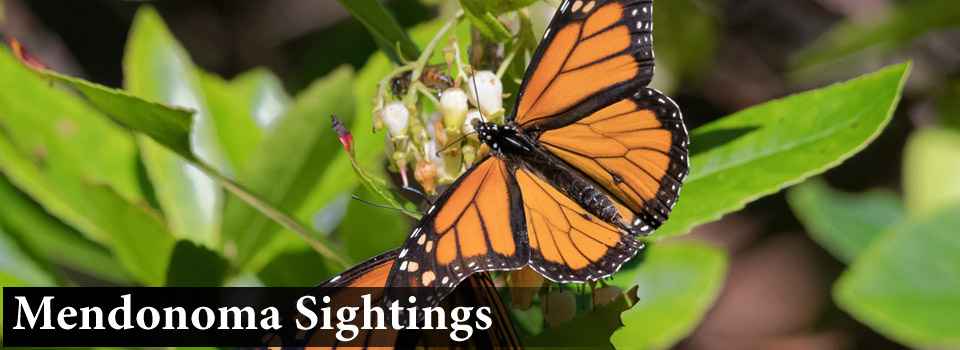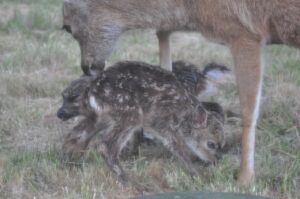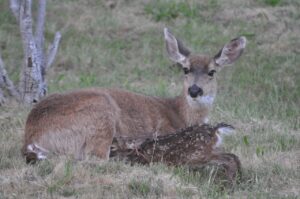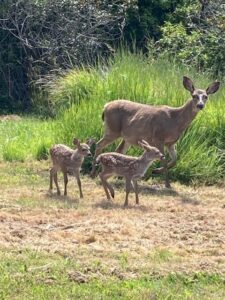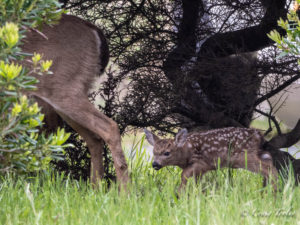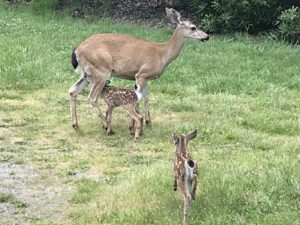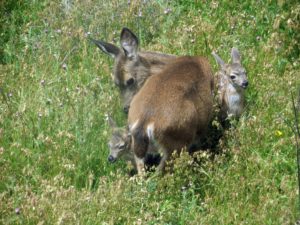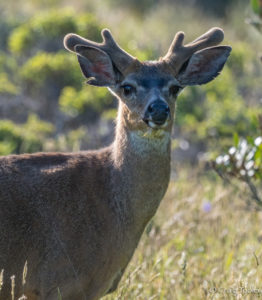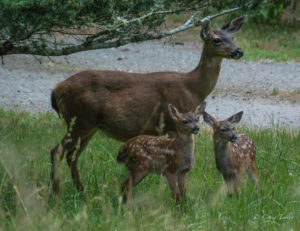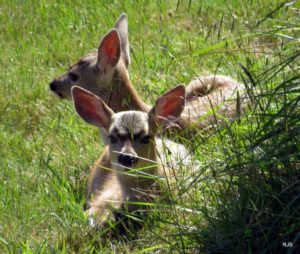Joe Cassetta was in the right place at the right time. Near his Sea Ranch home, around 7 p.m., he saw this Doe give birth to twins. The tiny Fawns are still wet from their birth.
Here they are beginning to explore their mother and begin nursing.
About a week later, Joe spotted the family again, and look how confident the Fawns look now!
Remember to watch for these little ones when driving the coast's roads. If a Doe crosses the road, wait a minute to see if a Fawn...or two...or even three might be following her.
Thanks to Joe for allowing me to share his photos with you here.
Sunny, warm and WINDY! The Pacific Ocean is full of whitecaps today. Upwelling, igniting the marine food chain, is surely taking place courtesy of this northwest wind.
